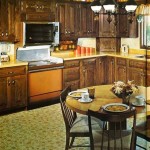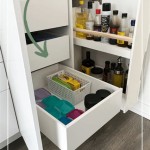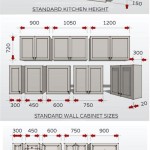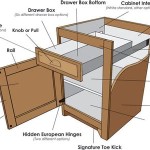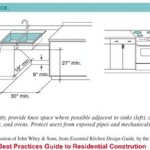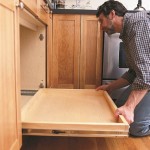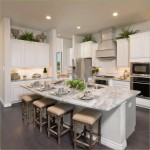Baseboard Heat Under Kitchen Cabinets: A Comprehensive Guide
Baseboard heaters are a common and efficient way to heat a home, offering consistent warmth and a familiar aesthetic. However, placing them under kitchen cabinets can raise concerns regarding heat distribution, safety, and potential damage to the cabinets and surrounding areas. This article will explore the pros and cons of installing baseboard heaters under kitchen cabinets, providing a balanced and informative overview of the topic.
Pros and Cons of Baseboard Heat Under Kitchen Cabinets
Baseboard heaters offer a number of advantages, including affordability, ease of installation, and energy efficiency. However, their placement under kitchen cabinets can present unique challenges.
Pros:
One primary benefit is the increased heating efficiency. Placing the heater under the cabinets allows for direct heat transfer to the surrounding area, warming the kitchen more effectively. The location also prevents the heater from being obstructed by furniture or other objects, allowing for optimal heat distribution. Additionally, baseboard heaters are often easier to maintain than other heating systems, requiring minimal upkeep and repair. Their simple design also allows for easy installation, reducing the cost of labor. Finally, baseboard heaters are generally more affordable than alternative heating solutions, making them a budget-friendly option for homeowners.
Cons:
On the other hand, installing baseboard heat under kitchen cabinets can pose some challenges. The primary concern revolves around potential damage to the cabinets. The heat generated by the heater can warp or damage the cabinet material, especially if the heater is placed too close to the cabinet, or if the cabinet is made of a sensitive material like MDF or plywood. Additionally, the heat from the baseboard heater can affect the surrounding environment, potentially leading to dry air, warped countertops, or even overheating of the kitchen space. The location under the cabinets can also make it difficult to access and service the heater, potentially leading to issues with maintenance and repair.
Safety Considerations
Safety is paramount when installing baseboard heaters, particularly in close proximity to combustible materials. Here are some key safety considerations to keep in mind:
Distance from the Heater:
Maintaining a safe distance between the heater and the cabinets is crucial. Manufacturers typically provide recommendations for clearance based on the heater's output. It is important to consult the manufacturer's instructions and follow their recommended clearances to prevent overheating and potential fire hazards.
Heat Shielding:
Installing heat shields between the heater and the cabinets can act as a barrier against excessive heat transfer. These shields can be made of various materials, such as aluminum or stainless steel, and are specifically designed to reflect heat away from the cabinets. This creates a buffer zone and reduces the risk of damage.
Ventilation:
Proper ventilation is crucial for ensuring the safe and efficient operation of the baseboard heater. Adequate ventilation helps prevent overheating and encourages the circulation of warm air throughout the kitchen. Ensure sufficient space around the baseboard heater to allow for air circulation, and consider installing an exhaust fan or window fan to assist with ventilation.
Alternative Solutions
If the potential risks of installing a baseboard heater under kitchen cabinets outweigh the benefits, there are alternative heating solutions to consider:
Radiant Heaters:
Radiant heaters are an excellent alternative to baseboard heaters, offering similar warmth without the risk of damaging cabinets. Radiant heaters emit heat in the form of infrared rays, which are absorbed by objects and people in the room, rather than heating the air directly. This method of heating is more efficient and less prone to overheating issues, making it a suitable option for areas with sensitive furniture or materials.
Wall-Mounted Heaters:
Wall-mounted heaters provide a more aesthetically pleasing alternative to baseboard heaters. They are often more efficient and can be easily integrated into the kitchen's design. However, they require professional installation and may be more expensive than traditional baseboard heaters.
Under-Cabinet Heating Elements:
Under-cabinet heating elements are specifically designed to provide localized warmth under the cabinets. These elements are often smaller than traditional baseboard heaters and utilize radiant heat technology, minimizing the risk of damage to the cabinets. They are a convenient and efficient way to provide warmth to the kitchen counter space, without affecting the surrounding area.
Ultimately, the decision of whether to install baseboard heat under kitchen cabinets is a personal one that should be made after carefully considering the pros, cons, and potential risks. Consulting with a qualified electrician or heating specialist can provide valuable insights and recommendations for the ideal heating solution for your kitchen.

Baseboard Heat Under Cabinets Heating Home Remodeling Heater

Kickspace Heaters 101 Bob Vila

Stylish Built Ins For Baseboard Heating

Float Cabinet Over Baseboard Heater Heating Covers

How To Build A Mudroom Wall Kitchen Cabinets Four Generations Makeover Baseboard Heating Home

Installation Cadet

How To Install A Cabinet Base With Floor Vent Sawdust Girl

Any Experience With Toe Kick Heaters In The Kitchen

Heating With Electric Baseboards Integrated Into A Kitchen

Enhance Your New Kitchen With Toe Kick Heaters Boston Somerville
Related Posts

